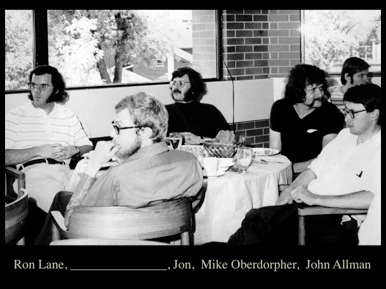
So I worked on vision and I was able to attract a postdoc from Speech and Hearing, I always like people from Speech and Hearing, I’ve had some real good ones from Speech and Hearing here [at Vanderbilt].

This is me, here [points to self]. You remember the earlier picture when I went to Duke – no facial hair whatsoever, short hair - so this is how I progressed in that time . Other people did too, look here, Mike Oberdorfoer, our Program Officer from the Eye Institute, but John Allman was back ten years behind – he never did change.
That was the lab, working on vision and we started doing things with microelectrode mapping and made a lot of progress and understanding how visual cortex is organized in primates. Now, that move wouldn’t have been possible, because I had spent two years recording surface potentials because that’s what Woolsey did. And there was one paper that actually got published on the superior colliculus because he wanted a medical school student to get their name on the paper, so he did get one paper out of that. But he was vehemently against this new-fangled idea that Hubel and Wiesel were using at the time, that of using microelectrodes, and pushing them into the brain and recording from cells. He thought this was a bad approach. Next Page